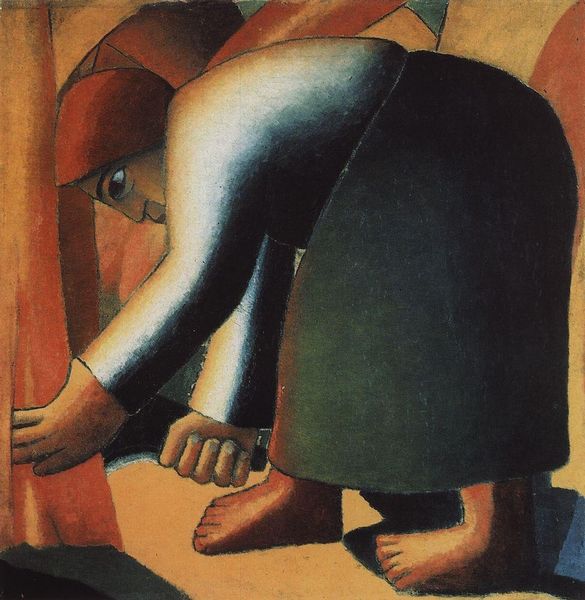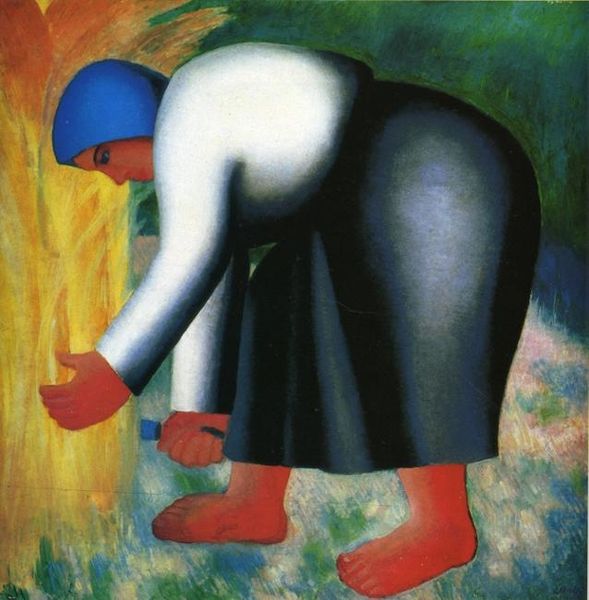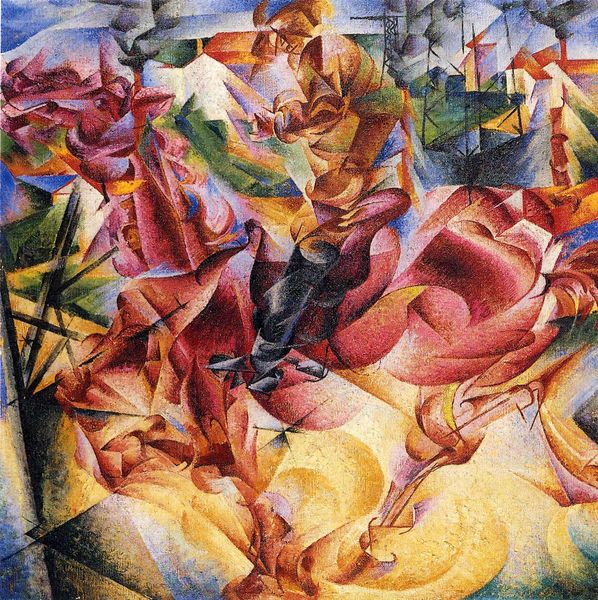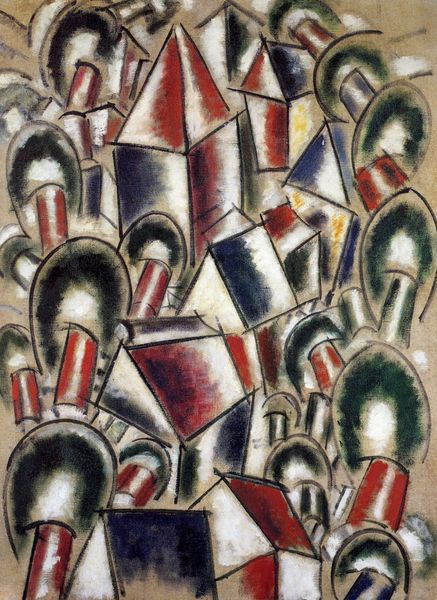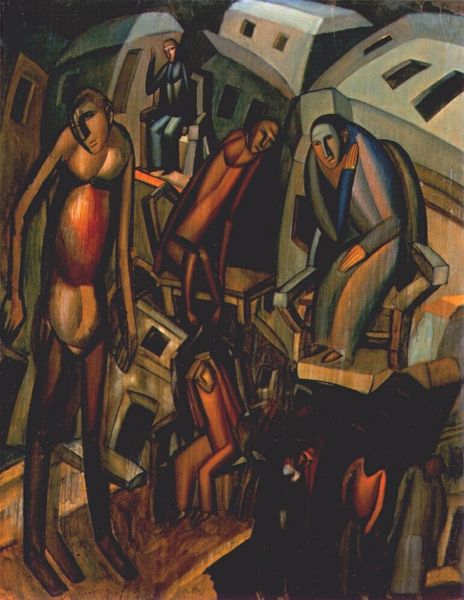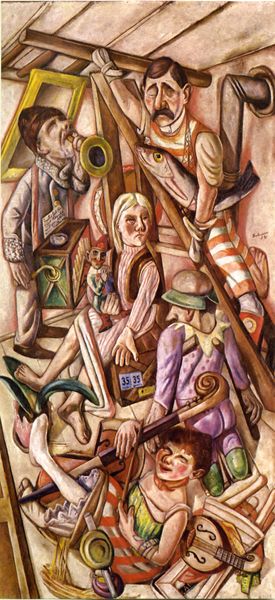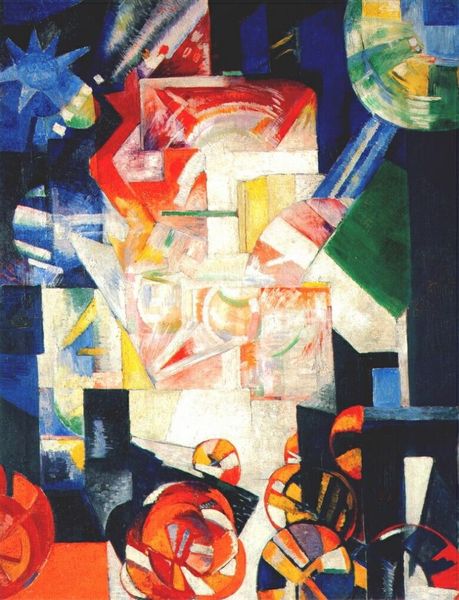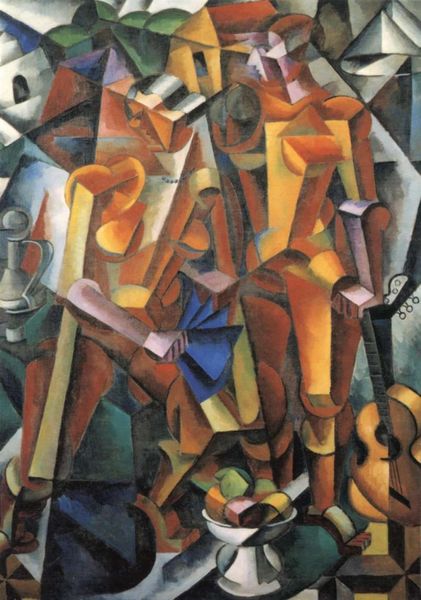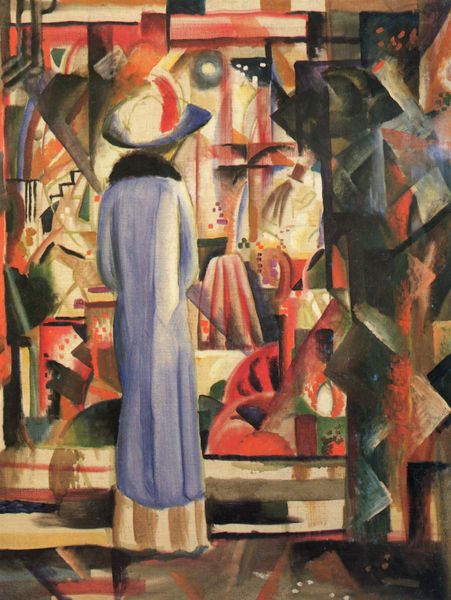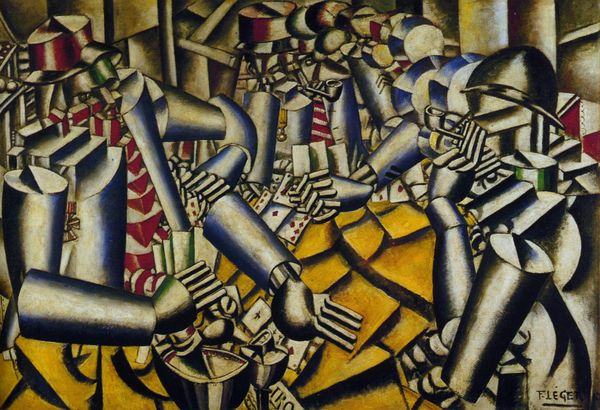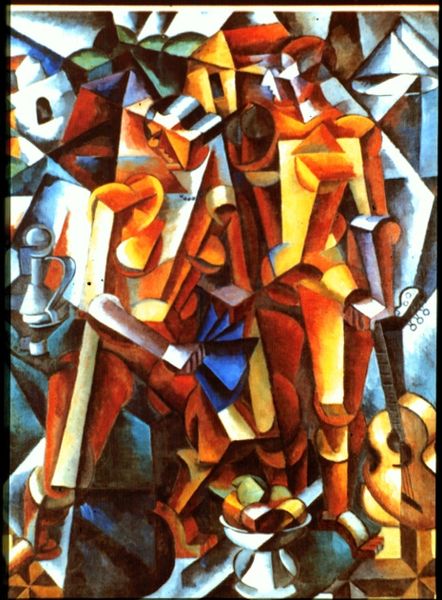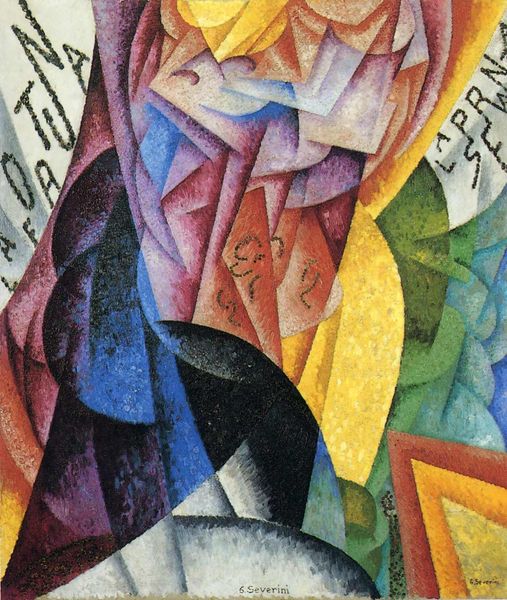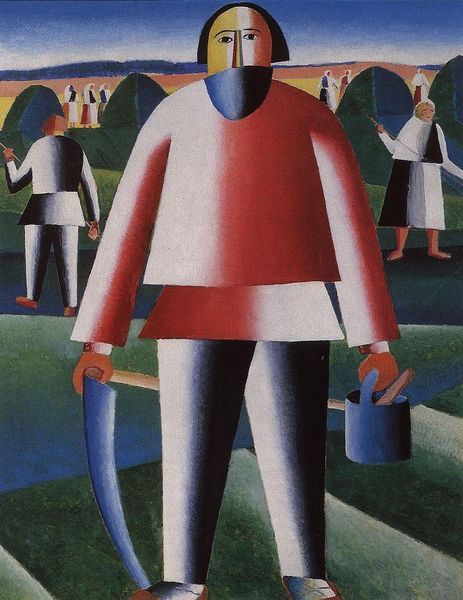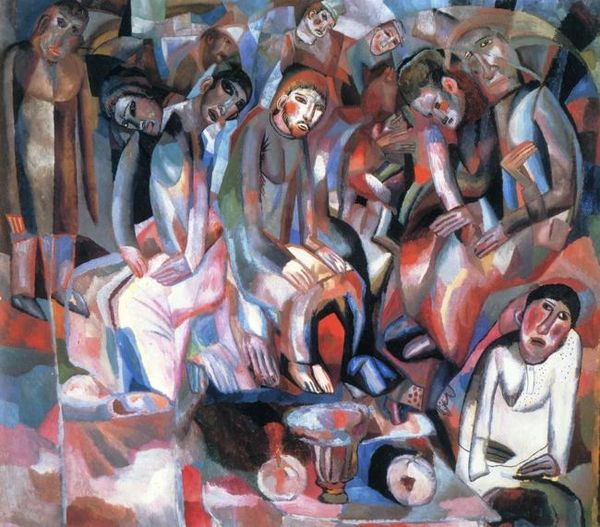
tempera, painting, fresco
#
narrative-art
#
tempera
#
painting
#
figuration
#
fresco
#
geometric
#
group-portraits
#
abstraction
#
russian-avant-garde
#
genre-painting
Dimensions: 72 x 74.5 cm
Copyright: Public domain
Curator: I’m struck by the sheer weight of this composition—the heavy forms and saturated colours lend it an almost monumental feel. Editor: And what we’re looking at is Kazimir Malevich's "Taking in the Harvest" from 1911. It is tempera on what appears to be canvas, with certain formal echoes to frescoes, a common trend among the Russian avant-garde painters of that era. Curator: Right, that fresco quality really resonates. You see how the figures are simplified into near-geometric shapes? Their actions—bending, lifting—it all becomes about the labour, the physical engagement with materials. I’m curious, what was Malevich saying about labor through those very forms and gestures? Editor: Well, remember that this was painted just before the First World War, in a period of great social and political upheaval in Russia. There's a movement away from the idealized peasant imagery that the academy and imperial patrons sought out, toward showing labor that is active and communal—these are the people on whom society and indeed Russia depends, and you feel it in Malevich's portrayal. The art academies themselves come to be seen as elitist relics unable to adapt to change and modernity, therefore movements such as Cubism were recontextualized in light of social change. Curator: Absolutely, and there’s a fascinating tension between abstraction and representation here. The figures are stylized but not entirely unrecognizable. You feel their humanity even in the abstraction. What are they harvesting? Are they hay bales or large cylindrical crops of some sort? Regardless, their forms echo that of the bales. It's all deeply integrated. Editor: Indeed. This painting isn’t merely depicting a harvest. It’s a statement about the value of collective labor and the role of art itself within a rapidly changing world, specifically referring back to artistic training—an ode to its origins. You can also feel Malevich paving the way for his later suprematist works. He questions and begins to tear down representation itself. Curator: A foundational moment, artistically and socially. Thanks for laying all that out, I will certainly view this again. Editor: A pleasure. I look forward to re-examining Malevich in future conversations with the museum's public programs.
Comments
No comments
Be the first to comment and join the conversation on the ultimate creative platform.
